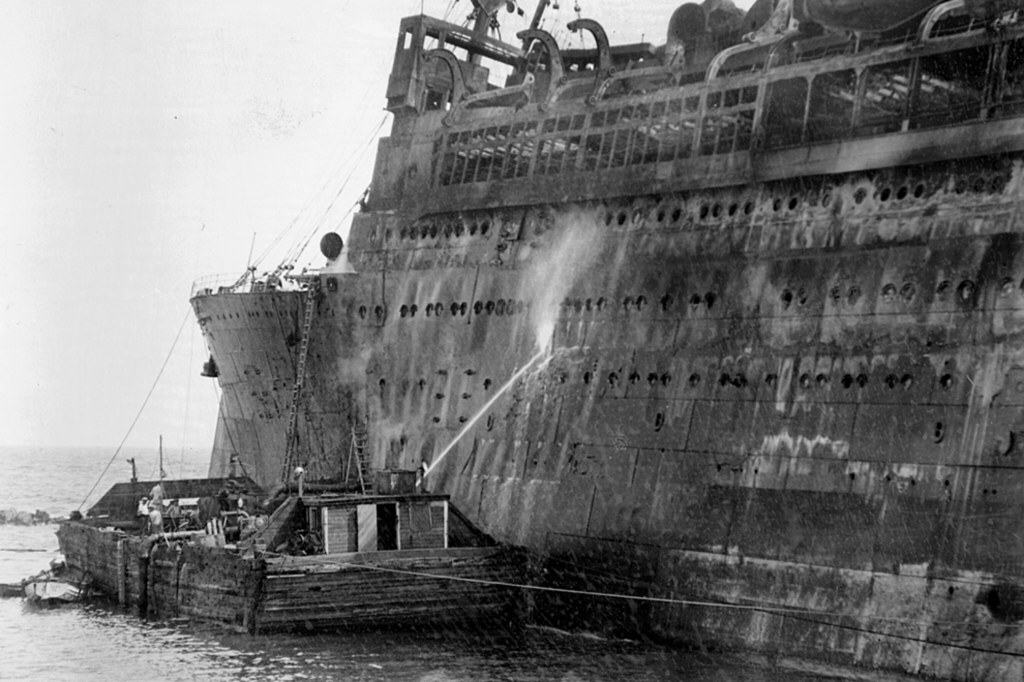The Titanic: The First Cruise Ship to Sink
Introduction
Dear cruise ship aficionado,
Welcome to our comprehensive article on the first cruise ship to sink, a tragedy that forever changed the maritime industry. In this article, we will explore the fascinating story of the Titanic, the ill-fated luxury liner that sank on its maiden voyage. Join us as we delve into the details of what, who, when, where, why, and how this tragic event occurred. Discover the pros and cons of this iconic ship and gain a deeper understanding of its historical significance. Let’s begin our journey into the depths of the Titanic’s story.
What Happened?

Image Source: natgeofe.com
The sinking of the Titanic is one of the most infamous maritime disasters in history. On the night of April 14, 1912, the Titanic struck an iceberg in the North Atlantic Ocean and began taking on water. Despite its grandeur and supposed unsinkable nature, the ship was doomed. In the early hours of April 15, the Titanic sank, claiming the lives of over 1,500 passengers and crew members.
Who Were on Board?
Among the passengers and crew on board the Titanic were a diverse mix of individuals from different social classes. From wealthy businessmen and prominent socialites to immigrants seeking a better life in America, the Titanic carried people from all walks of life. Notable figures such as John Jacob Astor IV and Benjamin Guggenheim were among the wealthy elites who lost their lives in the tragedy.
When Did It Happen?
The sinking of the Titanic occurred in the early hours of April 15, 1912. The ship had departed from Southampton, England, on April 10 and was en route to New York City. Tragically, the voyage was cut short just four days after the ship’s departure.
Where Did It Happen?
The sinking of the Titanic took place in the North Atlantic Ocean, approximately 400 miles off the coast of Newfoundland. The exact coordinates of the ship’s final resting place are 41.726931° N latitude and 49.948255° W longitude.
Why Did It Happen?
The sinking of the Titanic was the result of a combination of factors. One of the main causes was the ship’s high-speed journey through a known iceberg zone. Additionally, the design flaws and inadequate number of lifeboats on board contributed to the high loss of life. The tragedy sparked major changes in maritime regulations and safety protocols.
How Did It Happen?
The sinking of the Titanic was a result of a collision with an iceberg. Despite receiving warnings about icebergs ahead, the ship’s captain, Edward Smith, maintained a high speed. This decision, combined with the lack of binoculars for the lookout and the failure to divert the ship’s course in time, led to the fatal collision. The iceberg punctured several compartments, causing the ship to flood and ultimately sink.
Pros and Cons of the Titanic
Like any major technological innovation, the Titanic had its strengths and weaknesses. Some pros of the ship included its luxurious amenities, spacious accommodations, and advanced engineering. However, there were several drawbacks, such as the limited number of lifeboats, the lack of experienced crew members, and the overconfidence in the ship’s unsinkability. These cons ultimately contributed to the magnitude of the disaster.
Frequently Asked Questions
1. Could the Titanic have been saved?
While there were missed opportunities to prevent the sinking, it is unlikely that the Titanic could have been saved once it struck the iceberg. The ship’s design and inadequate safety measures made survival difficult.
2. How many survivors were there?
Out of the approximately 2,224 people on board, only around 710 survived the sinking of the Titanic.
3. Did any famous individuals survive?
Yes, some notable figures, such as Molly Brown and Charles Lightoller, managed to survive the disaster. Their stories of bravery and resilience have become legendary.
4. What lessons were learned from the Titanic’s sinking?
The sinking of the Titanic led to significant improvements in maritime safety. It resulted in the establishment of international ice patrol services, the implementation of stricter regulations regarding lifeboats, and the development of wireless communication systems on ships.
5. Are there any artifacts from the Titanic still preserved today?
Yes, many artifacts from the Titanic have been recovered and are on display in museums around the world. These relics offer a tangible connection to the tragic event and help preserve the memory of those who perished.
Conclusion
The sinking of the Titanic remains a poignant reminder of the fragility of human endeavors. It serves as a stark lesson about the importance of safety measures, preparedness, and the need to learn from past mistakes. As we remember the lives lost on that fateful night, let us strive to ensure that such a tragedy is never repeated. May the story of the Titanic continue to educate and inspire generations to come.
Final Remarks
Disclaimer: The information provided in this article is based on historical records and accounts of the Titanic’s sinking. While every effort has been made to ensure accuracy, some details may vary due to the passage of time and differing sources. This article serves as a tribute to the memory of the Titanic and those affected by the tragedy.